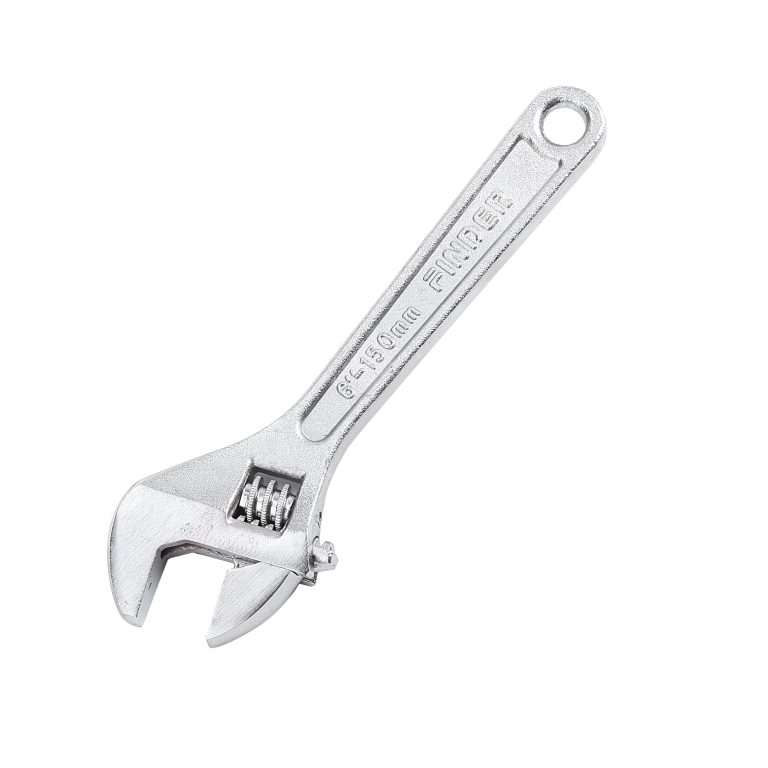A wrench is a manual tool that uses the principle of leverage to turn bolts, screws, nuts, and other threaded fasteners that hold the opening or sleeve of a bolt or nut.
The working principle is to apply an external force to a clamping handle at one or both ends of the handle, and the handle can be tightened to hold the opening or sleeve hole of the bolt or nut.
When using a wrench, external force should be applied to the handle in the direction of thread rotation to turn the bolt or nut. Wrenches are usually made of carbon structural steel or alloy structural steel.
There are basically two types of wrenches: dead wrenches and live wrenches
Various types of wrenches
1. Stupid wrench (Stupid wrench)
A fixed size opening is made at one or both ends to turn a nut or bolt of a certain size. A solid wrench, also known as an open end wrench, comes in two types: single headed and double headed.
2. Box wrench
The working end with hexagonal or hexagonal holes at both ends is suitable for situations where the workspace is narrow and ordinary wrenches cannot be used.
3. Dual purpose wrench
One end is the same as a single headed solid wrench, and the other end is the same as a ring wrench. Tighten bolts or nuts of the same specifications at both ends.
4. Internal hexagonal wrench
It is used for disassembling and assembling internal hexagonal bolts (plugs), with specifications represented by the size S of the hexagonal opposite side, and there are thirteen types of 3-27mm. A complete set of internal hexagonal wrenches is used in automotive maintenance operations, which can be used for disassembling and assembling M4-M30 internal hexagonal bolts.
5. Socket wrench
It is composed of multiple sleeves with hexagonal or hexagonal holes and equipped with various accessories such as handles and extension rods, especially suitable for turning bolts or nuts with very narrow positions or deep depressions.
A socket wrench mainly consists of a socket head, handle, ratchet handle, quick crank, joint, and connecting rod. Various handles are suitable for various occasions, with the principle of easy operation or improving efficiency. The commonly used specifications of socket wrenches are 10-32mm. Many specialized socket wrenches are also used in car maintenance, such as spark plug sockets, wheel hub sockets, tire nut sockets, etc.
6. Torque wrench
It is a specialized tool that can read the magnitude of the applied torque, and its specifications are divided by the maximum measurable torque. There are two commonly used types: 294N · m and 490N · m; A torque wrench can not only be used to control the tightening torque of threaded parts, but also to measure the starting torque of rotating parts, in order to check the fit and assembly situation.
Its opening size can be adjusted freely within a certain range, and its usage is the same as that of an open end wrench, but the operation of an adjustable wrench is not very flexible. Its specifications are expressed in terms of maximum opening width (mm), commonly including 150mm, 300mm, etc.

The correct selection of wrench tools
(1) The opening size of the selected wrench must match the size of the bolt or nut. If the wrench opening is too large, it is easy to slip and damage the hexagon of the screw. In the maintenance of imported cars, attention should be paid to the selection of metric and British wrenches. The selection principle of various types of wrenches: Generally, socket wrenches are preferred, followed by ring wrenches, open end wrenches, and finally adjustable wrenches.
(2) To prevent wrench damage and slipping, the tension should be applied to the thicker side of the opening. This should be especially noted for adjustable wrenches that are subjected to high forces, to prevent the opening from forming an “eight” shape and damaging the nut and wrench.
(3) A regular wrench is designed according to the strength of human hands. When encountering tighter threaded parts, the wrench cannot be struck with a hammer; Except for socket wrenches, all other wrenches should not be equipped with a force rod to prevent damage to the wrench or threaded connection.
